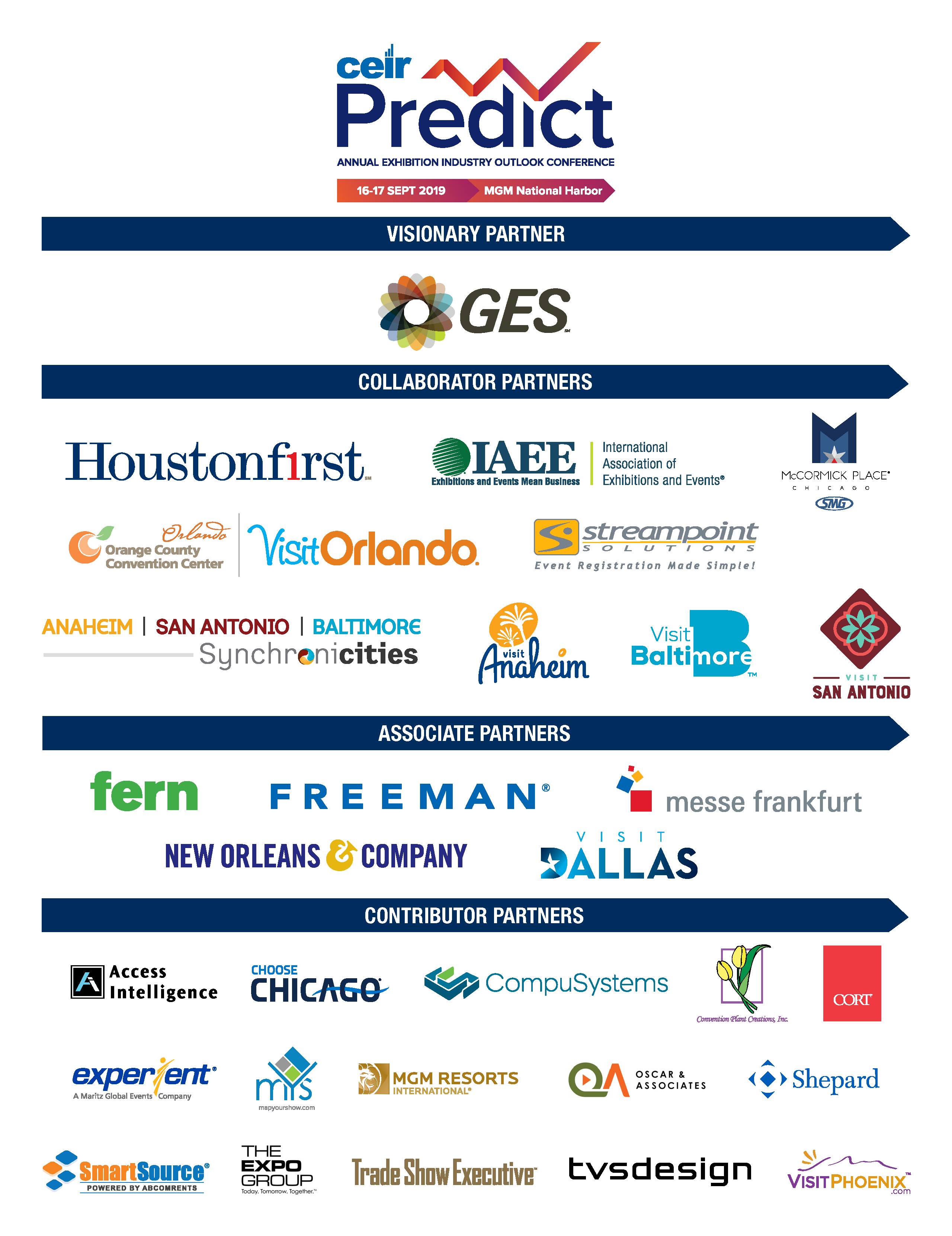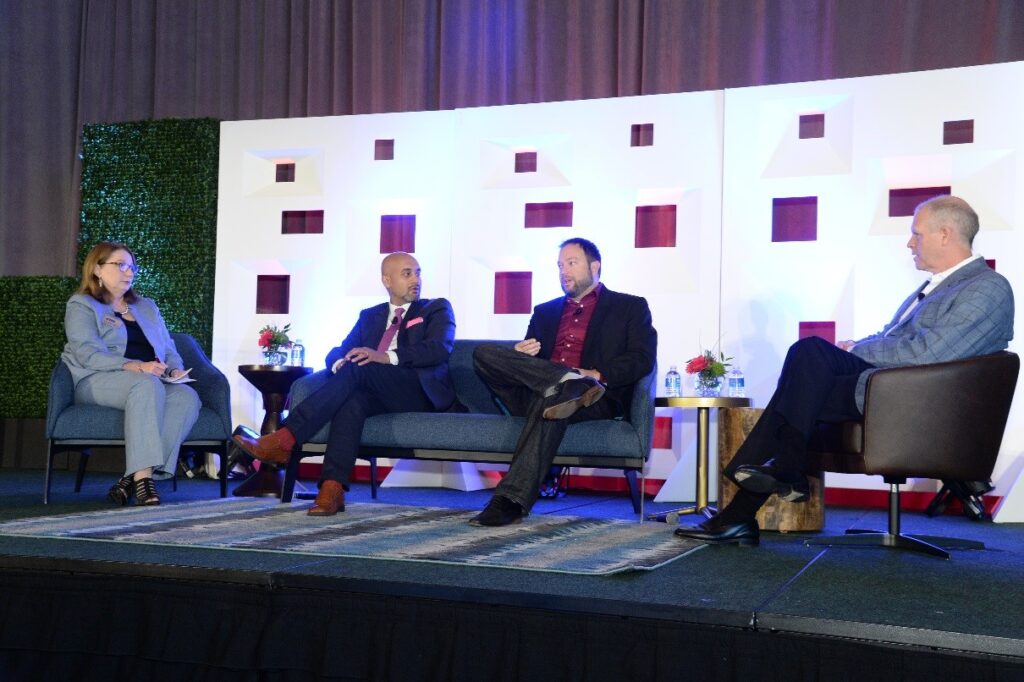By Cathy Breden, CMP, CAE, CEM
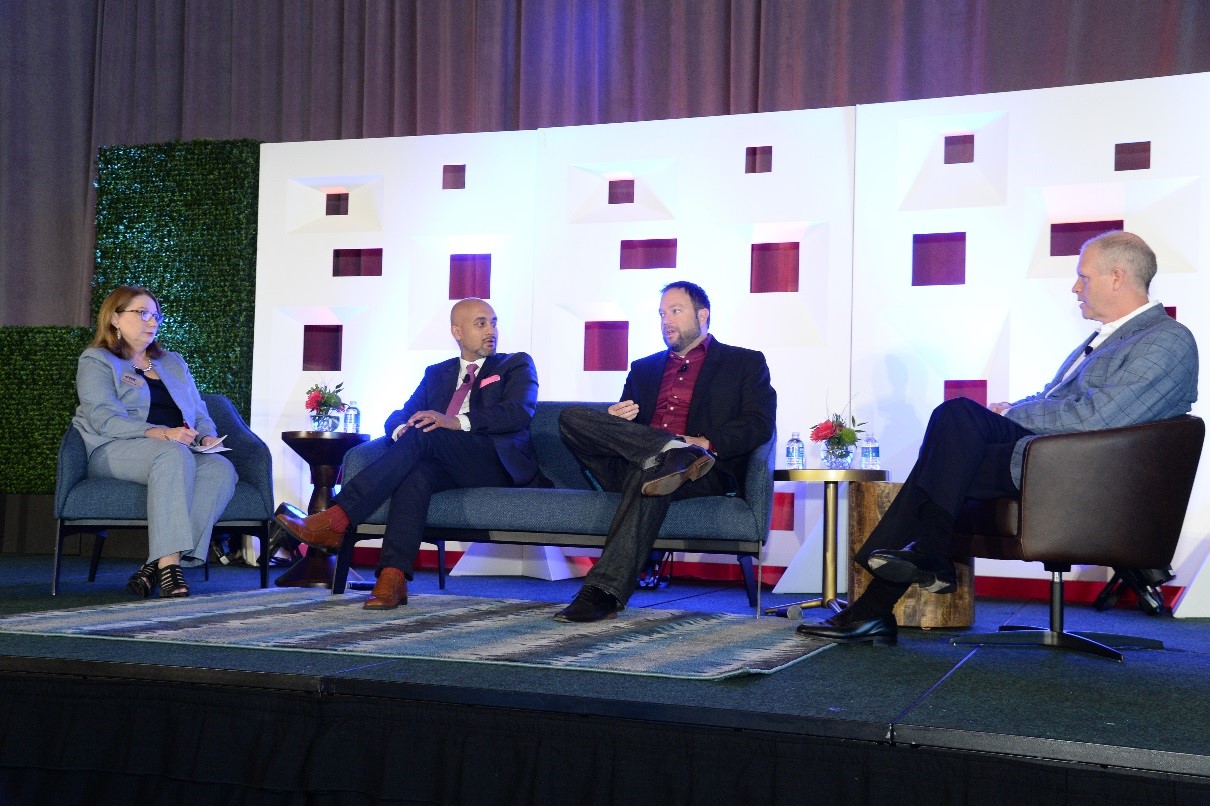
Using Marketing Disruptors to Launch Innovation, supported by Visionary Partner GES, looked at the challenges facing corporate marketers. Moderated by Arjun Chakravarti, SVP, Analytics & Insights, GES and panelist Mike Lakas, Vice President of Information Technology & Operations, American Foundry Society. Insights provided by Dr. Tom Steenburgh, of the University of Virginia Darden School of Business discussed the sales processes for existing products versus new products entering the market, and the changing nature of selling driven by technology. Dr. Steenburgh notes that the selling process is much more difficult today. As an example, automobile sales in the past were controlled by the sales staff. With the Internet, customers are becoming much smarter, especially B2B customers, making them more knowledgeable than maybe even the salesperson responsible for the sales of the product. Buyers have access to information online and are doing their homework before they make the purchase. He asserts the market will reward companies that give power to the buyer. B2B exhibitions have an opportunity to contribute to the two-way conversation, helping exhibitors save money lost to inefficiencies, as it is getting harder to engage face-to-face with prospective buyers. There needs to be the right mix of product experts and smart salespeople at the exhibition. The biggest marketing opportunity today is content marketing; there is a need to generate more of the right content at the right time. Trade shows are an excellent medium for CMO’s to leverage, they struggle with content generation. Trade shows are rich with relevant content that can be curated for this purpose.
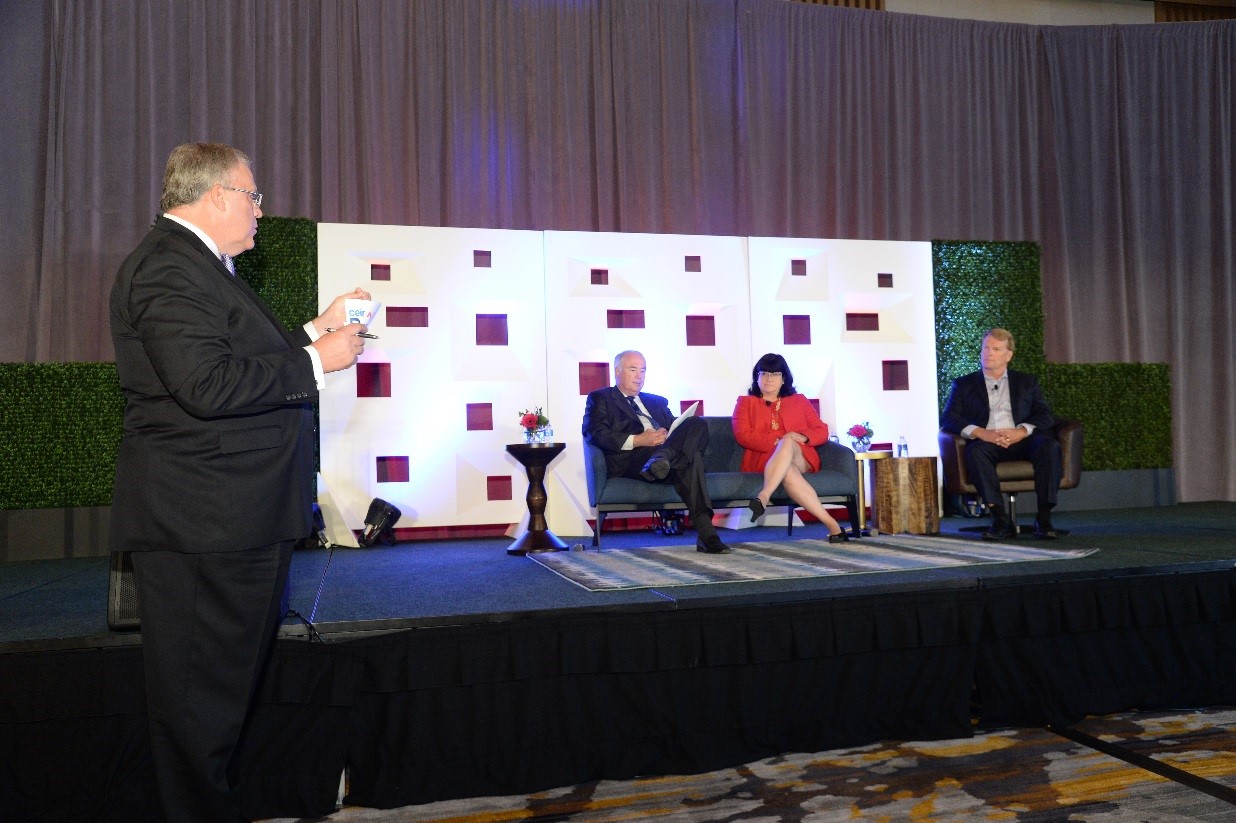
A lively conversation on Trade, Technology and Infrastructure Funding was moderated by Voices in Advocacy Roger Rickard with Nancy Drapeau, PRC, CEIR’s VP of Research; John Paxton, COO & CEO Designate, Materials Handling Industry Association (MHI) and Bill Reinsch, Scholl Chair in International Business, Center for Strategic and International Studies. CEIR conducted a survey assessing the impact of trade tariffs on the exhibitions industry. Seventy-five percent of organizers responding to the survey believe trade tariffs are having a negative impact on the industry. Over half, 56% of surveyed executives at organizations that have held shows in 2018 through July 2019, report their events have sustained impacts as a result of these trade tariff policies. Forty-eight percent sustained exhibitor participation impacts and 36% with attendance. Unfortunately, where impacts have occurred, they are predominantly negative. 82% of those reporting exhibitor participation impacts say they have sustained exhibit sales losses and among those encountering attendance impacts, 76% report lower registration. Declines are coming largely from countries where the trade tariff issues are in play as well as domestically, suggesting negative effects due to global supply chain issues. To access trade survey results, go HERE.
To counter the impact, organizer executives are using aggressive marketing and sales efforts to maximize exhibit sales and attendance, and they are looking to diversify domestically, as well as international attendance in regions not impacted by the tariffs. Bill Reinsch predicted that U.S. – China relations will most likely be strained for another year.
The supply chain is shortening with companies having closer access to customers. Exhibition organizers need to focus on their technologies strategies and make their show live year-around. The environment around trade is changing rapidly and organizers need to be agile in order to respond to the current world events as the situation demands.
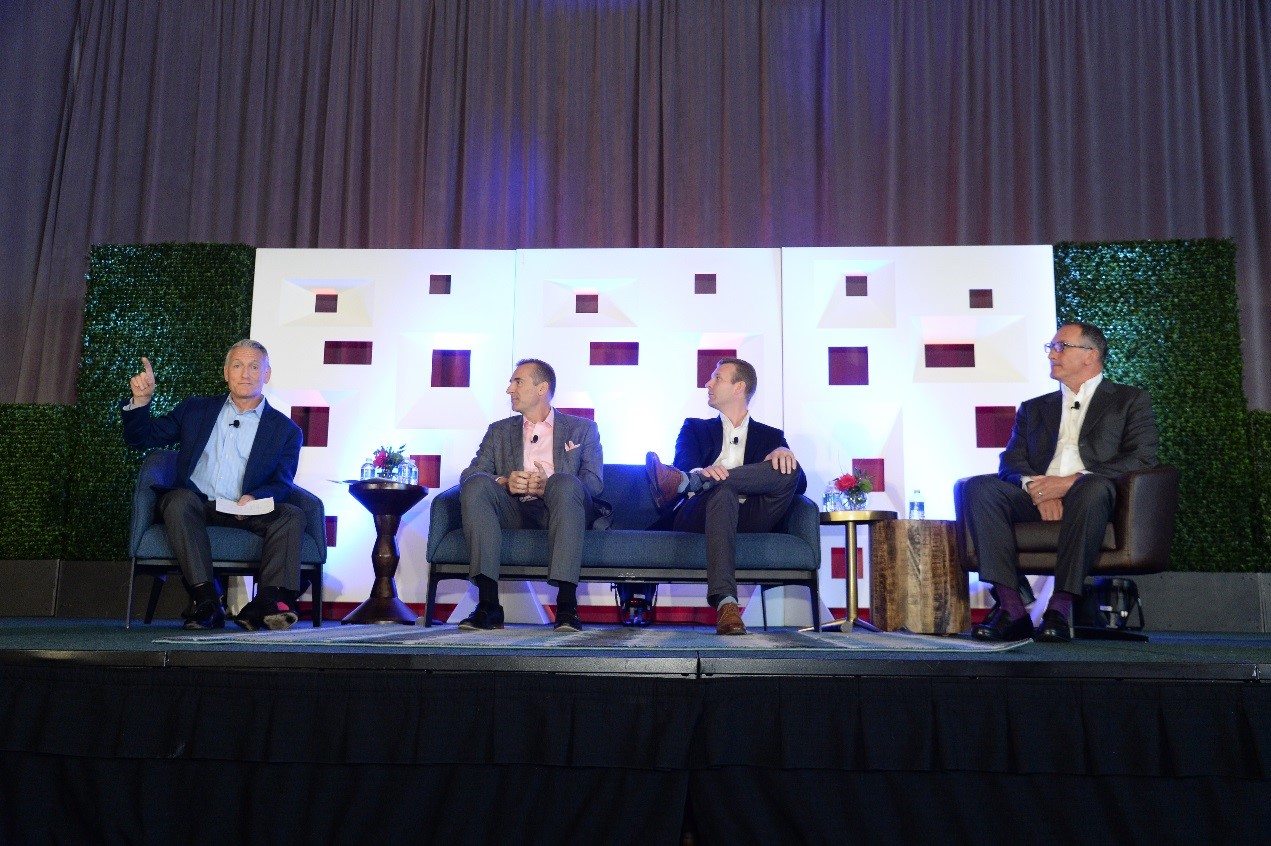
The Show as a Financial Instrument and Source of Funding was a topic moderated by Andy Macey, EVP of Global Strategy Practice at Freeman with panelists Brett Conradt, Managing Director, Stax, Inc.; Simon Kimble, Executive Chairman, Clarion Events Ltd. And Kerry Smith, Divisional President, Marketing & Media Group, Access Intelligence LLC.
For most associations, the trade show is their greatest financial asset and yet for many association organizers, consideration has not necessarily been given on investments that can grow their shows. In light of shifting trends, events need to continuously evolve. Corporate events, for example, are marketing events. These events invest in high premium experiences whose purpose is to create a funnel of customers. Association organizers might want to look at a corporate event for inspiration and adapt some of the offerings to deliver more impactful, creative experiences.
If funding is a challenge, associations may not have considered seeking outside funding to take their show to the next level. Panelists noted that equity partners are open to considering minority investments where the association maintains ownership of the brand and the investor works to grow or expand the event globally, as an example.
For those who might be interested in exploring an outside investor, some insights shared on helping a prospective funder determine if an event is a candidate for funding:
- Investors are more interested in making minority investments with the association maintaining control.
- To help decide whether an investment is worthwhile, prospective funders are looking for discussions based on available data to help discern the growth potential for an event, such as: revenue growth over time, return rate on attendees, attrition and the reason(s) why attendees and/or exhibitors do not return, net promotor score, an understanding on the connection of the community to the event.
- There needs to be good strategic alignment. Interest in outside investment cannot be based on just the money, but rather a good alignment/interest in making the show better.
CEIR appreciates the support and partnership with Freeman in producing this session.
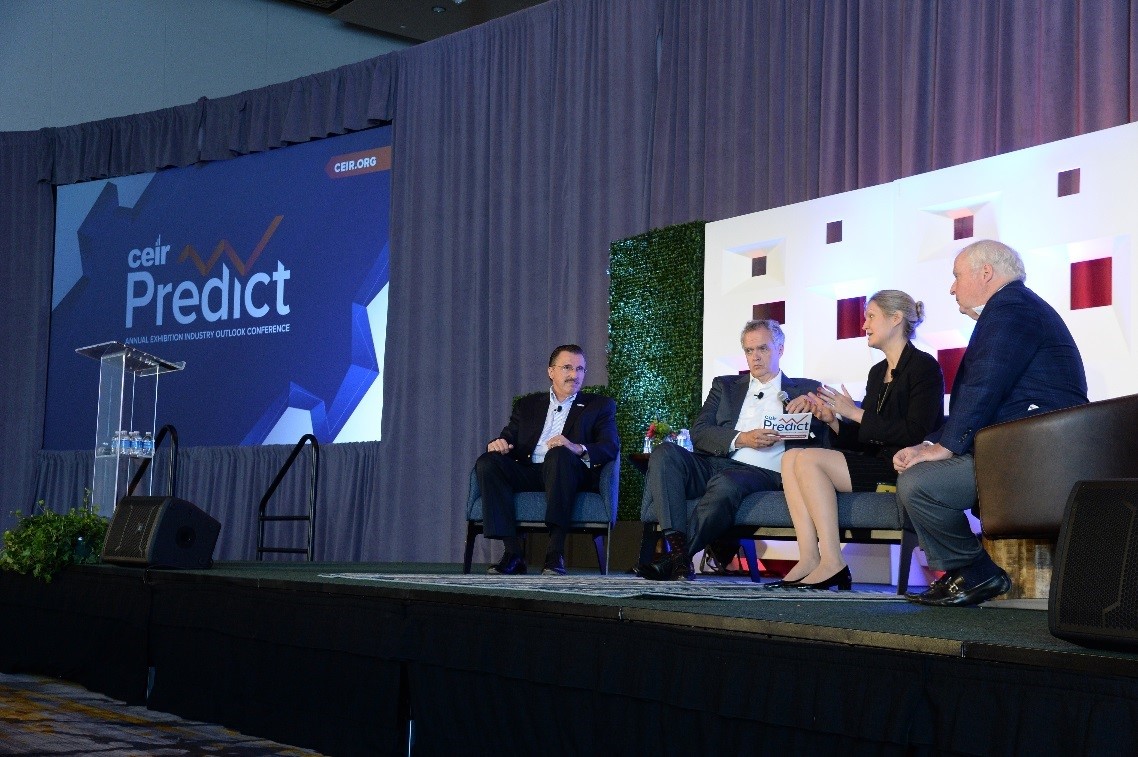
A Deep Dive Panel Discussion on Macro Factors Impacting the Economy, as well as trade shows was moderated by Vincent Polito of mdg with panelists Jerry Howard, CEO of the National Association of Home Builders (NAHB); Dennis Slater CEO of the Association of Equipment Manufacturers (AEM) and Lindsey Piegza, Chief Economist, Stifel Fixed Income. Ms. Piegza provided an insightful look at what is occurring in the economy and indicators to watch:
- Economic conditions are moderate in the U.S. with waning momentum
- Companies are still hiring, although less robust. Specific industries are more robust than others
- Trade tariffs will disrupt business and will result in direct or indirect consumer price increases
- There is international uncertainty weighing on markets as yields retreat
- Policymakers are not reaching any type of consensus on most issues
Both AEM and NAHB have experienced declining international attendance due to the lack of a trade deal. The construction industry is a leading indicator for the exhibitions industry. NAHB has found that building is booming where it is less regulated; the cost of regulatory compliance is 25 percent higher where it exists. Housing, for instance, is robust in urban markets where government compliance is less regulated. In the agriculture industry, tariffs are putting a burden on machinery, increasing cost by seven percent, resulting in lowered earnings. Farmers are not able to sell crops which is contributing to an economic slowdown.
Jobs in construction and manufacturing are hard to fill with qualified employees. It was the immigrants that helped build America and immigration needs to be addressed. This combined with young people who have a negative view of these types of jobs has resulted in a labor shortage in these sectors. High school counselors are directing students to four-year colleges rather than technical schools. This, along with losing many people to opioid addiction is contributing to the shortage.
In summary, the economy is poised to sustain slow, low growth, below one percent. Although Ms. Piegza does not see a 2008-style recession, she compared it to more like a balloon that is slowing losing air with lower positive numbers, lower job growth and lower GDP. The U.S. has the largest potential as a global economy, and if it can get its fiscal policy in line, there could be a higher level of growth.
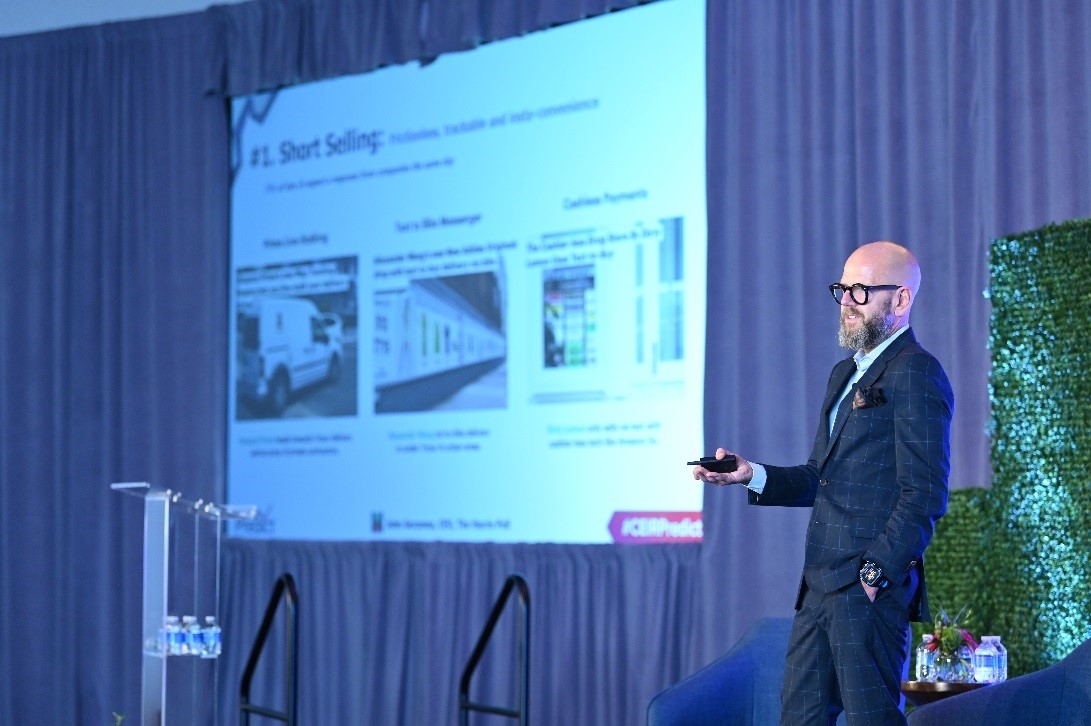
The Harris Poll’s John Gerzema, who is the CEO of Harris Insights and Analytics provided insights into Trends Shaping Our Future. Mr. Gerzema set the stage for the panel discussion by revealing the Top 25 Trends impacting, or beginning to impact, society today. Monitoring trends and being proactive in questioning how emerging trends might impact exhibitions are helpful in developing proactive strategies. Some of the trends poised to impact trade, and consumer events, are being driven by the Gen Z generation, currently ages 13 to 24, who want and expect frictionless, instant and trackable insta-convenience; they expect same day responses from companies. Cashless payments using mobile phones is expected to move fast. Corporate social responsibility is a strong trend, as well as a company being authentic to its brand, reflecting their customer base.
In the follow up panel discussion between moderator Kimberly Hardcastle-Geddes of mdg, John Gerzema joined Michelle Mason, CAE, FASAE, President & CEO, Association Forum and Don Pazour, CEO of Access Intelligence discussed the trends and their possible impact on the exhibitions. The rich content of this session will be shared in articles delving into the trends and considerations for trade shows.
Thank You, Partners!
